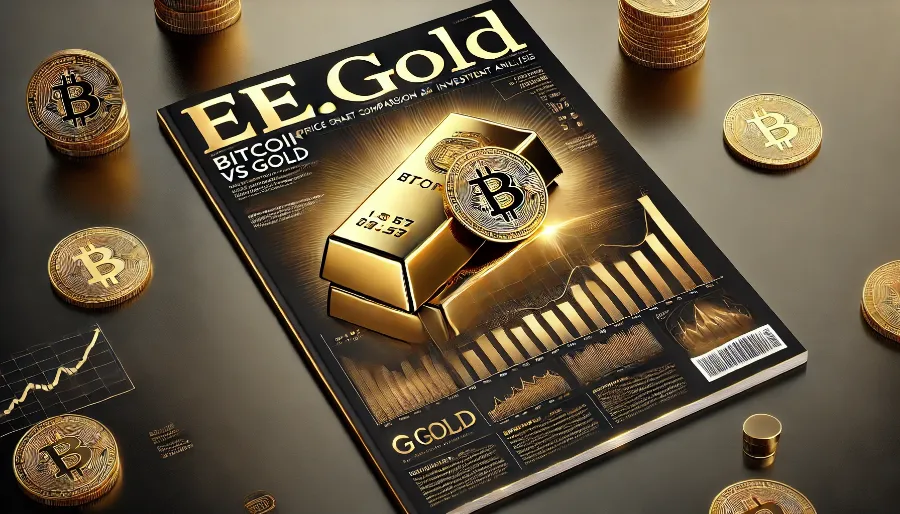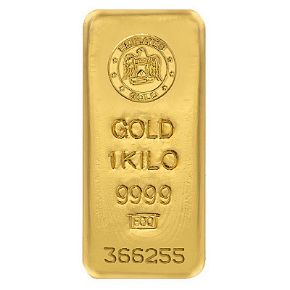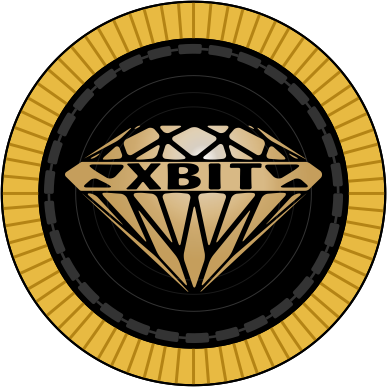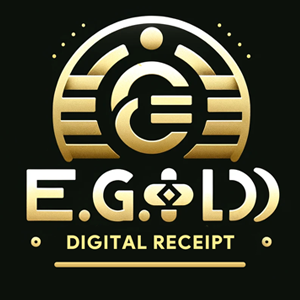
Why Compare Bitcoin and Gold?
Bitcoin and gold are two of the most discussed assets in modern financial markets, often compared for their unique roles as stores of value. While gold has been a traditional safe-haven asset for centuries, Bitcoin is often referred to as "digital gold" due to its fixed supply and decentralized nature. Both assets are seen as hedges against inflation and economic uncertainty, but they appeal to different types of investors. Comparing Bitcoin and gold prices allows us to understand how these two assets perform under varying market conditions and their suitability for different investment goals.
Key Differences Between Bitcoin and Gold
Bitcoin is a digital asset and the first cryptocurrency, introduced in 2009 by an anonymous creator under the pseudonym Satoshi Nakamoto. It operates on a decentralized blockchain network and has a maximum supply of 21 million coins, making it deflationary by design. Gold, on the other hand, is a physical commodity with intrinsic value that has been used as currency and a store of value for thousands of years. Its supply is limited but expands gradually through mining.
Bitcoin is known for its volatility, with prices fluctuating significantly over short periods. Gold, in contrast, is much more stable, experiencing slower and more predictable price movements. Bitcoin is often used as a speculative investment or for diversification in tech-focused portfolios, while gold is a more traditional choice for long-term wealth preservation.
Historical Price Trends: Bitcoin vs Gold
The price history of Bitcoin and gold reveals their contrasting nature. Bitcoin has experienced exponential growth since its inception, with prices surging during bull markets and dropping significantly during bear markets. For example, Bitcoin's price skyrocketed from under $1,000 in early 2017 to nearly $20,000 by the end of that year. After a prolonged bear market, it reached an all-time high of over $68,000 in November 2021.
Gold, on the other hand, has shown steady growth over decades. Its price per ounce rose from around $300 in the early 2000s to over $1,800 in recent years. Gold's price often increases during economic crises, such as the 2008 financial crash and the COVID-19 pandemic, when investors flock to safe-haven assets.
Bitcoin vs Gold Price Chart: Comparing Trends
A Bitcoin vs Gold price chart highlights the stark contrast between these two assets. Bitcoin's chart is characterized by sharp peaks and valleys, reflecting its high volatility and speculative nature. Gold's chart, in contrast, shows a more gradual and consistent upward trend, reflecting its role as a stable store of value.
For example, during the COVID-19 pandemic in 2020, both assets saw significant gains as investors sought safe-haven options. Bitcoin’s price increased from approximately $7,000 in March 2020 to over $29,000 by the end of the year, while gold rose from around $1,500 to over $1,900 per ounce during the same period. However, Bitcoin's returns were much higher, albeit with greater risk.
Investment Potential: Bitcoin vs Gold
Both Bitcoin and gold have unique investment potentials depending on an investor’s goals and risk tolerance. Bitcoin offers high potential returns due to its volatility and limited supply but comes with significant risk. Its adoption as a payment method and digital asset continues to grow, attracting tech-savvy investors and institutions.
Gold, on the other hand, is a time-tested asset known for preserving wealth during inflation and economic crises. It is less volatile than Bitcoin and provides stability in a diversified portfolio. Gold is also widely used in industries such as jewelry and electronics, adding to its intrinsic value.
Investors seeking high-risk, high-reward opportunities may favor Bitcoin, while those prioritizing stability and wealth preservation often choose gold. For many, a combination of both assets can provide a balanced approach to portfolio diversification.
Factors Influencing Bitcoin and Gold Prices
Several factors influence the prices of Bitcoin and gold. Bitcoin's price is driven by factors such as adoption rates, regulatory developments, and market sentiment. Its limited supply and growing institutional interest also contribute to its price movements. Conversely, gold’s price is influenced by macroeconomic factors such as inflation, interest rates, and central bank policies. Geopolitical tensions and demand from industries like jewelry and technology also play a role.
Risks and Challenges of Investing in Bitcoin and Gold
Investing in Bitcoin comes with high volatility and regulatory uncertainty. The cryptocurrency market is relatively young and prone to speculative bubbles, making it a risky asset for conservative investors. Security concerns, such as the potential for hacking and the loss of private keys, also pose challenges.
Gold, while more stable, is not without its downsides. Physical gold requires secure storage, and its returns are typically lower than riskier assets like stocks or Bitcoin. Additionally, gold prices can stagnate during periods of economic stability, limiting its growth potential.
Comparing Bitcoin and Gold as Inflation Hedges
Both Bitcoin and gold are often seen as hedges against inflation, but they function differently in this role. Gold has a proven track record of maintaining purchasing power over centuries, making it a reliable choice during inflationary periods. Bitcoin, despite being labeled "digital gold," lacks a long history to confirm its effectiveness as an inflation hedge. However, its limited supply and decentralized nature make it an appealing alternative for younger, tech-oriented investors.
How Bitcoin and Gold Complement Each Other in a Diversified Portfolio
For investors seeking a balanced approach to risk and reward, combining Bitcoin and gold in a diversified portfolio can offer unique advantages. Gold provides stability and acts as a traditional safe-haven asset during economic downturns, offering a hedge against inflation and currency depreciation. Bitcoin, on the other hand, introduces growth potential and exposure to the rapidly evolving cryptocurrency market. While Bitcoin’s price movements can be extreme, they offer the possibility of outsized returns that gold cannot typically match. Together, these assets create a portfolio mix that balances the low-risk nature of gold with the high-reward potential of Bitcoin, enhancing diversification and reducing overall portfolio volatility.
Long-Term Outlook for Bitcoin and Gold Prices
The long-term price outlook for both Bitcoin and gold is influenced by global economic conditions, market demand, and investor sentiment. Gold, with its established role as a store of value, is expected to continue rising gradually over the coming years as inflationary pressures and geopolitical uncertainties persist. Central banks, which frequently purchase gold to diversify their reserves, also contribute to its steady demand.
Bitcoin’s future price trajectory is less predictable but potentially more explosive. As institutional adoption grows and blockchain technology continues to mature, Bitcoin could see increased acceptance as a legitimate asset class. Factors such as the ongoing issuance of Bitcoin through mining, its fixed supply cap of 21 million coins, and global regulatory developments will play key roles in shaping its long-term price trends.
Case Studies: Bitcoin vs Gold During Economic Crises
Historical data shows that both Bitcoin and gold perform well during periods of economic instability but in different ways. During the 2008 financial crisis, gold prices surged as investors fled to the safety of tangible assets, climbing from around $800 to over $1,800 per ounce in the following years. Similarly, during the COVID-19 pandemic, gold rose from approximately $1,500 to over $1,900 per ounce as global uncertainty peaked.
Bitcoin, which was created after the 2008 crisis, gained prominence during the COVID-19 pandemic as well. From March 2020 to December 2020, Bitcoin’s price increased from approximately $7,000 to over $29,000, demonstrating its appeal as a hedge against inflation and a speculative asset. However, its higher volatility made it a riskier choice compared to gold, which remained relatively stable throughout the period.
Bitcoin and Gold in the Modern Economy
In today’s economy, Bitcoin and gold occupy distinct but complementary roles. Gold remains the preferred choice for investors seeking a tangible, universally recognized store of value. Its use in industries like jewelry and technology ensures that it retains intrinsic value beyond its role as a financial asset.
Bitcoin, as a digital asset, represents the future of decentralized finance. Its adoption as a payment method and digital store of value continues to grow, driven by younger, tech-savvy investors and institutions. Bitcoin’s limited supply and decentralized nature make it an appealing alternative to fiat currencies, particularly in regions experiencing currency instability or economic turmoil.
Practical Considerations for Investing in Bitcoin and Gold
When deciding between Bitcoin and gold, investors should consider their financial goals, risk tolerance, and time horizon. Gold is well-suited for conservative investors looking to preserve wealth over the long term. It is also ideal for those seeking stability during uncertain times, as its price movements are typically less volatile than Bitcoin’s.
Bitcoin, on the other hand, appeals to investors with a higher risk appetite and a desire for growth. Its price can experience dramatic swings over short periods, making it more suitable for those who are comfortable with market volatility. Investors should also consider the logistical aspects of each asset. Gold requires secure storage, whether at home, in a bank deposit box, or through a professional vaulting service. Bitcoin, as a digital asset, requires secure wallets and awareness of cybersecurity risks to protect against hacking and loss of private keys.
Conclusion: Bitcoin vs Gold – Which Should You Choose?
The choice between Bitcoin and gold ultimately depends on your individual investment goals and risk tolerance. Gold remains a timeless asset with a proven track record of stability and wealth preservation, making it an excellent choice for conservative investors. Bitcoin, with its potential for high returns and growing adoption, offers an exciting opportunity for those willing to embrace risk and explore the future of digital finance.
For many investors, the best strategy is to hold both assets as part of a diversified portfolio. Gold provides a stable foundation that protects against inflation and economic uncertainty, while Bitcoin offers exposure to cutting-edge technology and potential growth. By analyzing historical price trends, understanding the factors that influence each asset, and aligning your investments with your financial objectives, you can make informed decisions about how to incorporate Bitcoin and gold into your investment strategy.
NOTE
This Content is the copyrighted content of EE.GOLD. All rights are reserved. You are welcome to share or use our content only by including direct links to our website. Any other form of reproduction, distribution, or use without proper attribution is strictly prohibited.
This Content is intended solely for educational purposes. The information provided does not constitute financial or investment advice.
Please note that Digital Storage Receipt, Secure Storage Solutions, and Physical Gold Sales are the only services offered by EE.GOLD.
We strictly adhere to government regulations and are firmly against all illegal financial or investment activities globally.
For further inquiries, feel free to contact us through our official channels.










.png)


This robe in timeless black is flocked with shimmering sequins and
eyecatching beadwork.
Think in regards to the colours you feel best in and the sorts of outfits that make you shine.
Sometimes, the most classic and chic mom of the bride outfits aren’t clothes at all!
Plan properly prematurely, so you'll not get
too careworn and may help either your son or daughter with
the marriage preparations.
No, you shouldn’t match with bridesmaids; as an alternative, complement them.
Matching your MOB gown is a enjoyable approach to show you consideration to
detail.
Another floral option for you , however this time in a fit and flare style.
Ask your son for his input, and/or attain out to your future daughter-in-law that
can help you pick out a dress.
Dillards is a great place to examine out if you’re in search of something
larger finish.
In brief, yes, however provided that it goes with the feel of the day.
The bride's mother clearly had the colour palette in thoughts when she selected this jade lace dress.
Preferably not be all black as which will recommend mourning.
Wear yours with heels in a neutral tone and delicate shoulder-grazing earrings.
This lace look feels special and festive, and not
utilizing a print, bold color, or dramatic sleeve in sight.
Now, I simply want to remember all this when my son gets married.
A basic rule for a wedding is that anything too long or too
short is a no-go.
In short, yes, however provided that it goes with the texture of the day.
If you like your legs, you could want to go together with
an above-the-knee or just-below-the-knee gown.
This will allow you to narrow down options, making the purchasing course of simpler.
Go for prints that speak to your wedding location, and most significantly, her private fashion.
Do you prefer to wear mild and airy colours or do you gravitate
towards darker shades?
For blogger Jenny Bernheim's fancy rehearsal dinner, her mother wore
a Carmen Marc Valvo costume, complete with a beaded illusion cut-out.
Stick to a small yet stately earring and a cocktail
ring, and maintain extra sparkle to a minimal.
Similar to the mothers of the bride and groom, the grandmothers
may want to coordinate with the wedding party.
This costume' dreamy chiffon cape feels ceremonial and refined, and is
easily removed to disclose a slinkier metallic sheath underneath for dinner and dancing.
Don't be afraid to make a press release in head-to-toe sparkle.
This attractive robe is produced from double-stretch Mikado for a streamlined, comfortable match.
David’s Bridal presents convenient online and in-person buying experiences.
Its expansive variety, changing into fit
and stylish design deem Montage the leader in Mother of the Bride and Mother of the Groom dress collections.
We've rounded up a number of the fairly Mother-of-the-Bride clothes to wear for spring weddings.
She's a superhero to you and your complete family, so
why not let her costume the part.
(I don’t suppose he'll benefit from the journey of purchasing with me).
After all, you don’t want to blend in with the bridesmaids and occasion decor.
Keep the traces of communication open throughout
the wedding planning course of.
She loves an excuse to attempt on a veil, has a minor obsession with flower crowns, and enjoys nothing
more than curating a killer celebration playlist.
For the mother whose fashion is modern and minimal, go for a robe with an architectural
silhouette in her favorite shade.
There are many dressing choices out there for every finances.
Its bateau neckline, three-quarter length sleeves, and full A-line skirt
make it flattering, in addition.